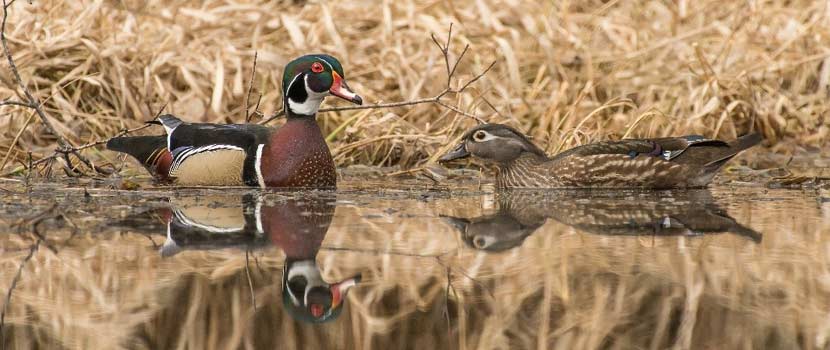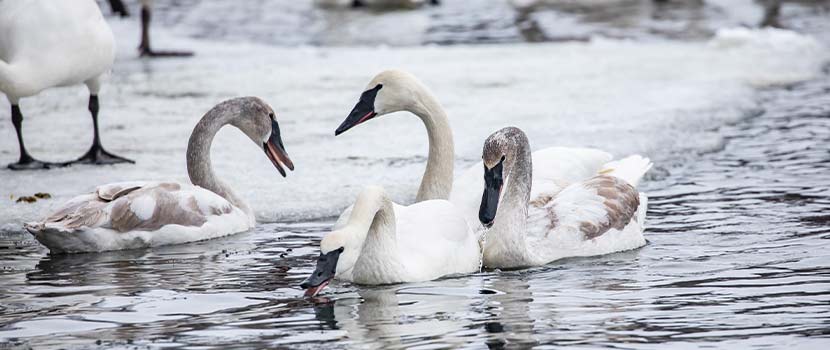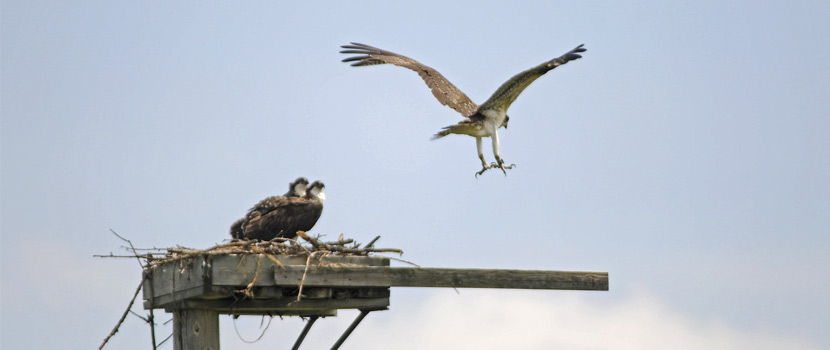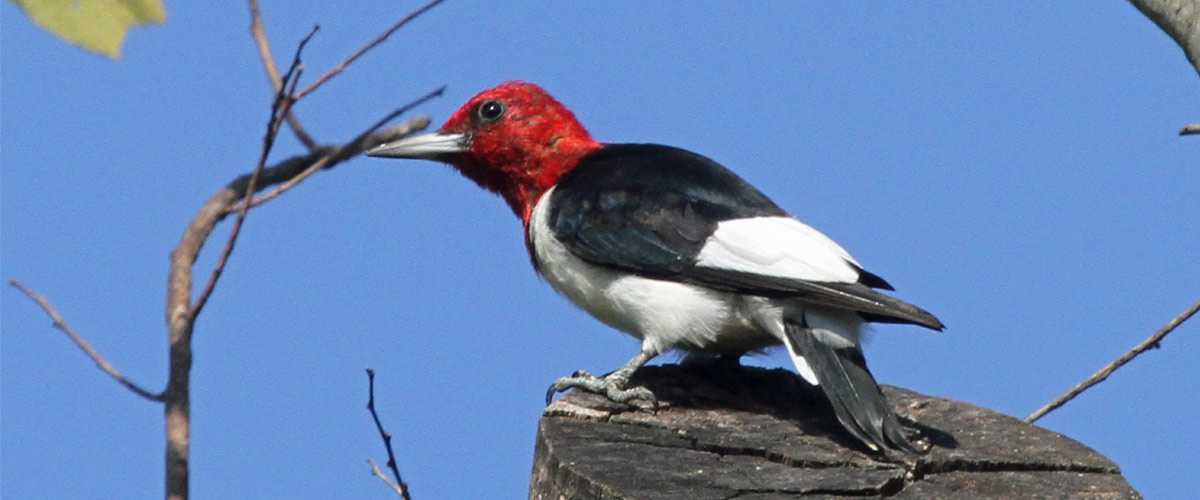
The Search for the Red-headed Woodpecker
By: John Moriarty
November 09, 2020
Category: Resource Management
Red-headed woodpeckers are the most elegant-looking woodpeckers in Minnesota with their white bodies, black-and-white wings, and completely red head. Most woodpeckers have some red feathers on their heads, but this is the only one that is all red. Other resident woodpeckers with noticeable red are the red-bellied woodpecker and the pileated woodpecker. The red-headed is about the size of a robin, and males and females have the same coloration.
Red-headed woodpeckers are also the rarest of the resident woodpeckers in Three Rivers Park District. We’re not quite sure why this is, but we hope to change it for the benefit of the woodpeckers.
Declining Populations
Red-headed woodpeckers were once a fairly common bird in Minnesota. However, while other woodpecker populations have remained steady, red-headed woodpeckers have been decreasing in number over the last 30 years. This has been attributed to a number of occurrences:
- Habitat fragmentation
- The cutting down of dead trees, which red-headed woodpeckers use for nesting
- Fewer insects – the main part of red-headed woodpeckers’ summer diet – due to agricultural chemicals
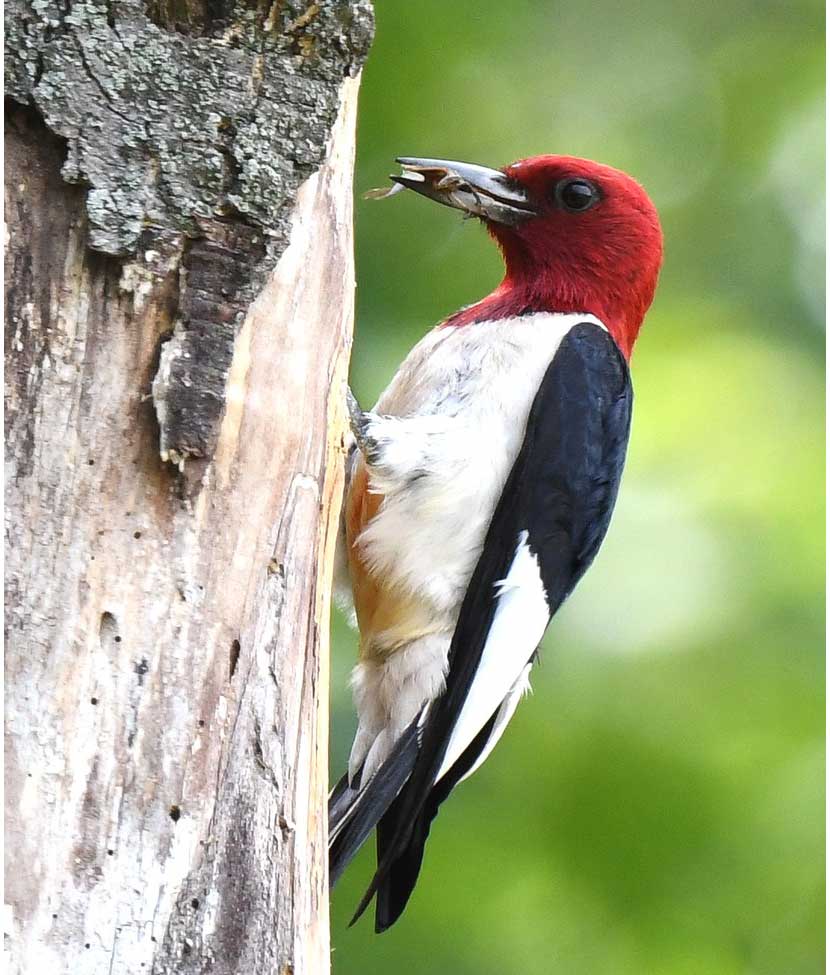
A Mystery To Solve
The fact that red-headed woodpeckers are so rare in Three Rivers has puzzled us for many years. We have many areas that appear to offer good habitat, especially at Crow-Hassan, Murphy-Hanrehan and Elm Creek park reserves. This habitat includes adequate dead trees (also known as snags) for making nesting cavities, adjacent grasslands and a good number of oak trees. Red-headed woodpeckers collect and store acorns for the winter.
Nearby Woodpecker Populations
There is a large population of red-headed woodpeckers at the University of Minnesota’s Cedar Creek Ecosystem Science Reserve in East Bethel, which is only 20 miles (as the woodpecker flies) from Elm Creek. This population has over 60 breeding pairs of red-headed woodpeckers.
The work being done at Cedar Creek is led by the Red-Headed Woodpecker Recovery Program, a special committee of the Audubon Chapter of Minneapolis. This program is made up of volunteers and University of Minnesota researchers with funding from the Legislative and Citizen Committee on Minnesota’s Resources and donations. They have been studying the nesting habitats and movement of red-headed woodpecker populations for over 10 years.
Recent funding has allowed them to put GPS trackers on the birds so they can follow them in Cedar Creek and during migration. Some birds have gone to Missouri!
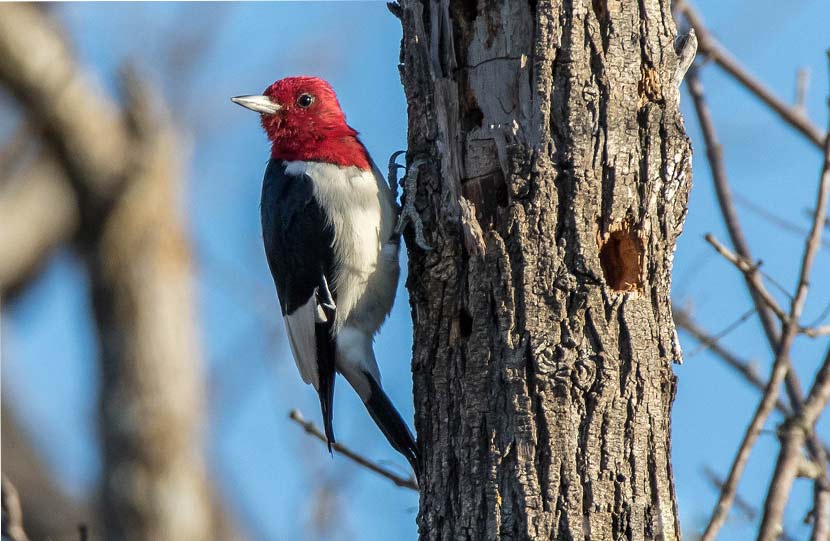
Next Steps at Three Rivers
At Three Rivers, we have been talking with the researchers at Cedar Creek to learn what we can do make our parks more attractive to red-headed woodpeckers. We have the ability to thin some or our woods or create more snags for nesting. We are looking forward to hearing recommendations from them in the future.
In spring 2021, we plan to attempt to attract red-headed woodpeckers to our parks by playing their mating calls in select woodlots. This will involve programming a weather-proof speaker system to play a loop of their calls in the morning and evening for several weeks. If we can attract them to the park, we hope they will decide to stay and nest.
Banner image: "File:Red-headed Woodpecker - Flickr - GregTheBusker.jpg" by Greg Schechter from San Francisco, USA is licensed under CC BY 2.0.
Archive image: "Red-headed woodpecker, Cedar Creek Ecosystem Science Reserve, East Bethel, MN" by Lorie Shaull is licensed under CC BY-SA 2.0.
About the Author
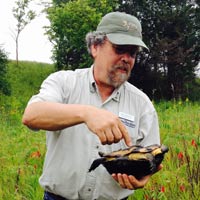
John Moriarty is the Senior Manager of Wildlife at Three Rivers Park District and has been with the Park District for 15 years. He has been involved in many of the wildlife restoration efforts and initiated the snake and butterfly efforts. John has led several projects to increase prairie habitat in the Park District. John likes exploring natural areas and looking for all types of plants and animals, but especially turtles.
Related Blog Posts
Giving Wood Ducks a Home in Three Rivers
By: Steven Hogg
Wood ducks are one of the most spectacular birds in North America. Learn what Three Rivers is doing to provide the space they need to nest and thrive in our parks.
Reintroducing Trumpeter Swans: What It Took to Succeed
By: John Moriarty
Trumpeter swans once nested throughout Minnesota, but were eliminated by early settlers who hunted them for feathers and food. Learn what it took to restore their populations and explore current efforts in managing trumpeters today.
Osprey Reintroduction: The Great Success Story
By: Steven Hogg
Ospreys used to be very common in southern Minnesota, but they disappeared from the Twin Cities after World World II. Learn about the program to bring these amazing birds back and how wildlife can survive in an urban area when given the right tools for success.
